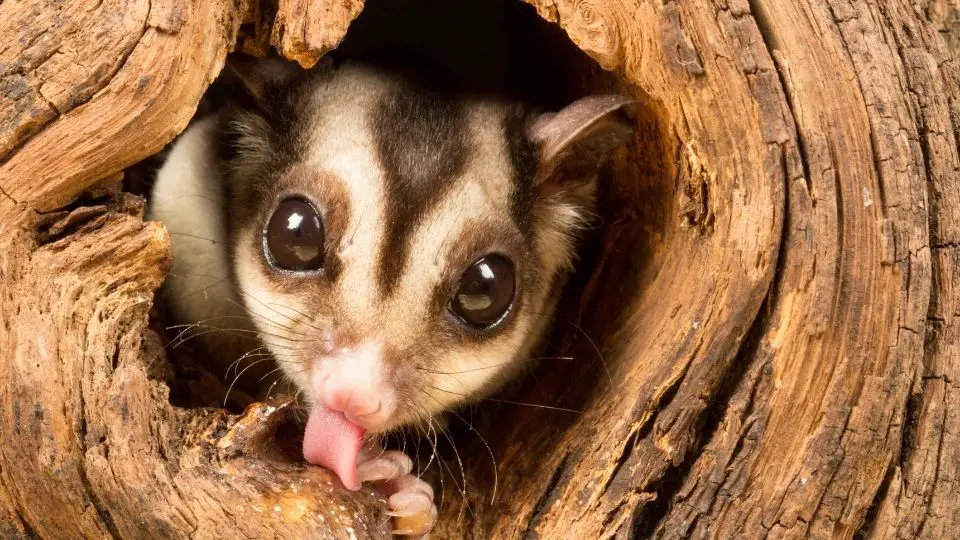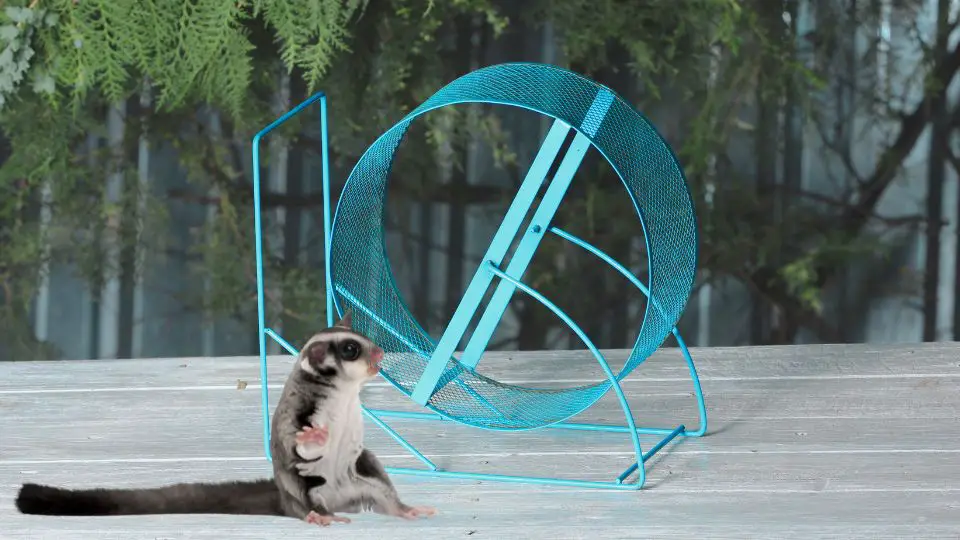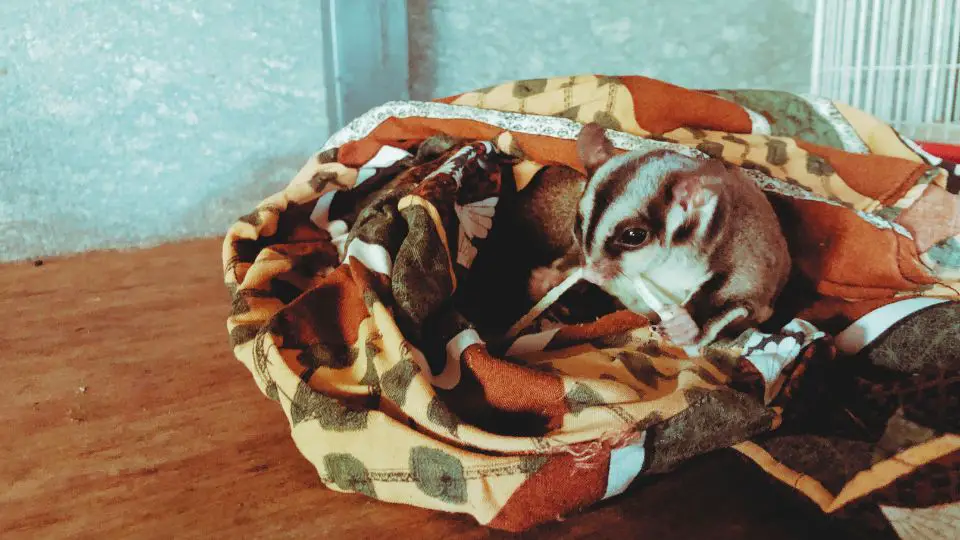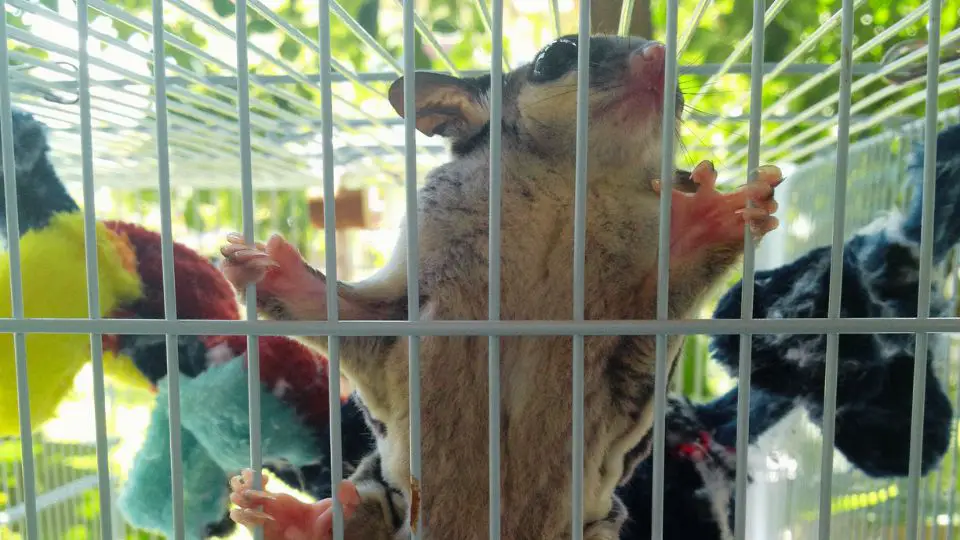The sugar glider is an omnivorous marsupial that is modest in size. The popular name alludes to its fondness for sweet nectarous foods. There are a number of factors that help sugar gliders to adapt to their environment.
Sugar gliders are social creatures that typically share nests and live in big groups to preserve energy throughout the winter. They are also the biggest marsupials to enter a condition of ‘torpor’. Torpor is a type of hibernation in which sugar gliders become physically inactive. On chilly days or when food is scarce, they might slip into torpor.
The fuzzy, tree-dwelling animals may be found not just in the wild, but also as pets. In this article we will take a look at how exactly sugar gliders adapt to external factors creating their environment.
Basic adaptations
Sugar gliders can only enter the torpor state for up to 16 hours each day. Torpor’s benefit is energy conservation during cold weather or when food is scarce. This increases their chances of survival, as a shortage of food and cold temperatures may kill little creatures like these.
Sugar gliders, like owls, are nocturnal. Because they are nocturnal, predators such as owls and kookaburras find it more difficult to spot and hunt them. This allows them to acquire food more easily and avoid competition for resources from other animals. They can also get away from the heat at night since it is cooler.
The patagium, which stretches from the wrist to the ankles of sugar gliders, is a gliding membrane. This construction enables the sugar glider to fly from tree to tree by forming a rectangular shape that acts like a parachute, reducing the possibility of predators catching them as the patagium allows them to easily come down from high up in the trees where they live.
Another important adaptation to the environment is that they have sharp teeth. Sugar gliders have two strong incisors that help them collect food and drill holes in tree bark so that honey sap and concealed insects may be located and swallowed. This helps the sugar glider’s survival since it would be difficult for the sugar glider to find food without these strong incisors.
Sugar gliders have claws that are very pointy and robust, making climbing around much simpler for these guys. Sugar gliders may hide from certain land predators by climbing trees.
These little creatures have prehensile tails, which help them to accomplish a variety of activities, including grabbing and transporting objects. Their long tails also assist them in steering their bodies as they glide through the air. These tails, like their claws, can be very useful in climbing.
How do sugar gliders adapt in the wild
Sugar gliders live in trees and seldom, if ever, have direct contact with the ground in the wild. They build their nests in holes in old growth trees. Sugar gliders may be found in Tasmania, Papua New Guinea and many adjacent isles, the Bismarck Archipelago, the Louisiade Archipelago, and some Indonesian isles, including the Halmahera Islands of the North Moluccas.
They may be found in any forest where there is a good food source, although they are most typically seen in eucalyptus-dominated woods. They are nocturnal, sleeping in their nests during the day and being active at night. They hunt insects and small vertebrates during the night and feed on the delicious sap of particular eucalyptus, acacia, and gum tree species.
Sugar gliders are omnivorous marsupials who eat a diverse range of foods. They are opportunistic feeders and can be carnivorous (preying mostly on lizards and small birds), although they also eat nectar, acacia seeds, bird eggs, pollen, fungus, and local fruits when available.
Sugar gliders are out at the same time as their predators, which is rarely a good thing. The sugar glider has the advantage of flying from tree to tree, allowing it to escape predators.
A ‘clan’ of up to seven adults and their young may establish and share a nest. They are playful and friendly within their own clan, but may defend their area fiercely and noisily if attacked by other animals or approached by Sugar Gliders from a rival tribe. Dominant males use scent gland secretions, located on their breast, to mark other clan members and the region around the nest.
They have harsh yapping cries that warn others of impending danger. During conflicts, you’ll also hear a shrill scream and a gurgling buzz.
The Sugar Glider frequently gives birth to twins, who stay in the pouch for around two months. They then leave the nest, typically with their mother, in search of food.
Sugar Gliders will travel up to a kilometer over open terrain to reach other glider colonies and woods. They are assumed to travel via power lines and fences, stopping at any tree along the way. A single tree left intact in a pasture or garden has the ability to serve as a critical breeding connection between two isolated glider colonies.
What type of environment do they need
Sugar gliders have similar mental capabilities to dogs. When sugar gliders become domesticated, they can learn tricks and will respond to their names!
One of the biggest downsides of having a sugar glider as a pet is its nocturnal behavior. Sugar gliders will be up during the night, making noise and possibly disturbing your sleep. They sleep virtually the whole day, so they will not miss you during the day.
This will be no problem for the vast majority of individuals. Your sugar gliders will be sleeping if you are at work or school during the day. When you go home in the evening, your sugar gliders will (nearly) be awake. Spend a lot of time connecting with your sugar gliders by playing with them or snuggling with them.
The cage should be placed in an area with a regular day/night light cycle. The cage should be placed in an area that receives full sunlight during the day and receives no or very little light at night.
If they don’t have something to do, sugar gliders might become bored. Because they are up for most of the night, it is critical to give adequate cage space and toys for your gliders to be active and play. Because you won’t be awake the entire night, it’s critical to have at least a pair of sugar gliders. Sugar gliders are gregarious creatures who like the company of other sugar gliders. Also, spend time each day playing and socializing with your pets.
If you wish to keep a sugar glider as a pet, make sure you have enough time to give them your undivided attention. If you can’t accomplish that, you should have two gliders that complement one another. Sugar gliders will become distant and unhealthy if they do not receive enough attention.
If not provided with proper food, they might suffer from calcium shortages in captivity. A shortage of calcium in the diet leads the body to leach calcium from the bones, with the hind legs exhibiting the most evident malfunction, which is frequently referred to as hind limb paralysis (HLP). Their food should consist of 50% insects or other protein sources, 25% fruit, and 25% veggies.
Conclusion
In conclusion, sugar gliders are highly adaptable creatures that can thrive in a variety of environments. They require a warm, humid climate with plenty of trees for nesting and climbing, but they can also survive in more arid climates with a little extra care. Sugar gliders make excellent pets for people who are willing to provide them with the care and attention they need.







